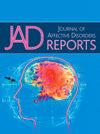Can the integrated and selected pattern approach effectively predict suicide rates? A study using internet search queries
Q3 Psychology
引用次数: 0
Abstract
Background:
Suicide prevention has become a global public health and political issue. There have been active attempts to predict suicides (suicide rates and suicide numbers) using search queries from search engines.
Methods:
This study used spike-and-slab regression which is one of the sparse variable selection techniques, and we called this approach the ‘integrated and selected pattern approach.’ we used monthly national suicide data and relative search volume (RSV) of 51 search queries from Google Trends for the United States (US) and Japan from 2004 to 2019, and compared the accuracy of models using this approach against those using other approaches.
Results:
The model employing the integrated and selected pattern approach demonstrated the highest accuracy and stability of predicted values in predicting suicide rates and the number of suicides in the US. However, in the case of Japan, the accuracy and stability of the predicted values for this approach were lower than other approaches. Furthermore, even in the US, where the integrated and selected pattern approach outperforms other approaches at the country-level, it does not consistently outperform other models across all data subsets.
Limitations:
The integrated and selected pattern approach is not universally the most efficient method for predicting suicides across all linguistic, cultural contexts, and demographic groups. It remains crucial to emphasize the importance of comparing its efficacy with several other approaches in practical implementations.
Conclusion:
The integrated and selected pattern approach is one of the potentially effective methods for predicting suicides.
综合选择模式方法能有效预测自杀率吗?一项使用互联网搜索查询的研究
背景:自杀预防已成为一个全球性的公共卫生和政治问题。人们一直在积极尝试通过搜索引擎的搜索查询来预测自杀(自杀率和自杀人数)。方法:本研究使用的是一种稀疏变量选择技术,我们称这种方法为“集成和选择模式方法”。“我们使用了2004年至2019年美国和日本谷歌趋势中51个搜索查询的月度国家自杀数据和相对搜索量(RSV),并将使用这种方法的模型与使用其他方法的模型的准确性进行了比较。”结果:采用综合选择模式方法的模型在预测美国自杀率和自杀人数方面具有最高的准确性和稳定性。然而,在日本的情况下,该方法的预测值的准确性和稳定性低于其他方法。此外,即使在美国,集成和选择模式方法在国家层面上优于其他方法,它也不能在所有数据子集上始终优于其他模型。局限性:综合和选择模式方法并不是预测所有语言、文化背景和人口群体自杀的最有效方法。强调在实际实施中将其效力与其他几种方法进行比较的重要性仍然至关重要。结论:综合选择模式法是预测自杀的有效方法之一。
本文章由计算机程序翻译,如有差异,请以英文原文为准。
求助全文
约1分钟内获得全文
求助全文
来源期刊

Journal of Affective Disorders Reports
Psychology-Clinical Psychology
CiteScore
3.80
自引率
0.00%
发文量
137
审稿时长
134 days
 求助内容:
求助内容: 应助结果提醒方式:
应助结果提醒方式:


